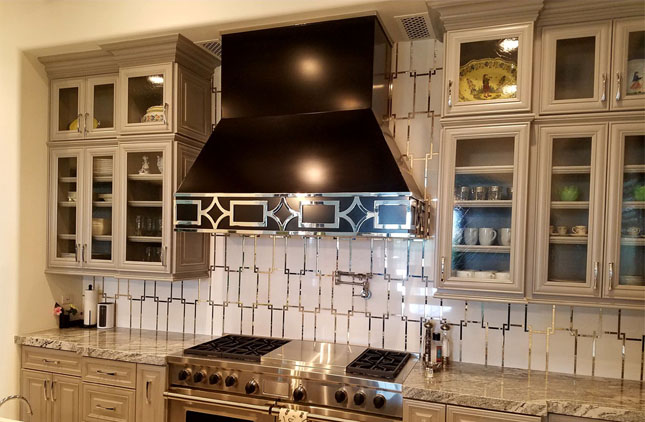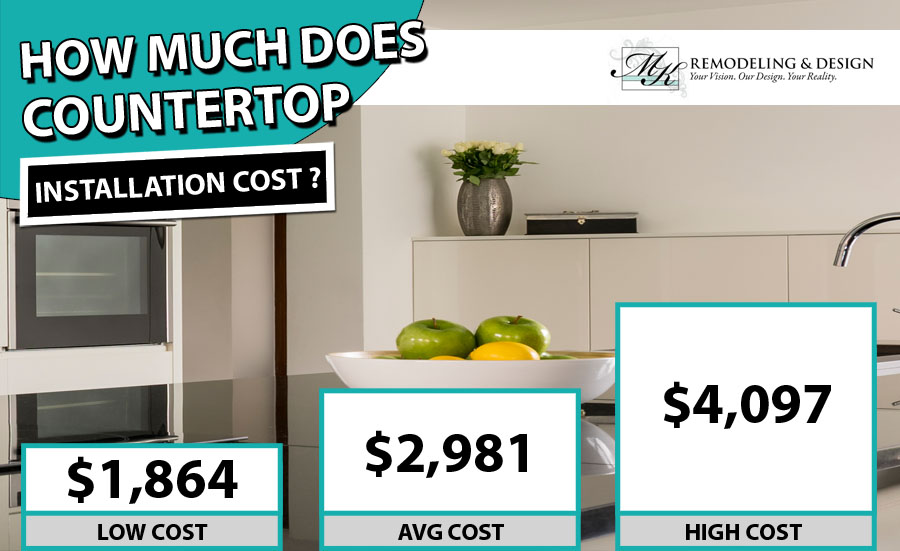- Removal of Combustion Byproducts: Gas ranges produce combustion byproducts, including carbon monoxide (CO) and nitrogen dioxide (NO2), which can be harmful if not properly vented. Ventilation helps remove these potentially dangerous gases from the kitchen.
- Heat and Steam Venting: Gas ranges generate heat and steam when cooking, and proper ventilation helps remove excess heat and moisture from the cooking area, creating a more comfortable kitchen environment.
- Odor and Smoke Removal: Ventilation helps dissipate cooking odors and smoke, preventing them from accumulating in the kitchen and throughout the home.
- Grease and Particulate Filtration: Range hoods often come equipped with grease filters and sometimes charcoal filters to capture grease and cooking particulates, improving indoor air quality.
There are two primary methods for venting a gas range:
- Range Hood with Exhaust Fan: The most common and effective method is to use a range hood equipped with an exhaust fan. Range hoods come in various styles, including wall-mounted, under-cabinet, island, and downdraft hoods. The exhaust fan in the range hood draws in the cooking byproducts and expels them outside the home. Make sure the range hood is appropriately sized for your range and kitchen space to ensure efficient ventilation.
- Overhead Ventilation System: In some kitchens, an overhead ventilation system may be installed above the gas range. These systems typically consist of a canopy or exhaust hood that captures and removes cooking byproducts. The captured air is then ducted to the outside through a vent or chimney.
When installing or using a range hood or ventilation system for a gas range, it’s important to follow local building codes and manufacturer guidelines. Regular maintenance, such as cleaning filters and inspecting ductwork for blockages, is also crucial to maintain efficient and safe ventilation.
Ventilation is essential not only for safety but also for the overall comfort and air quality in the kitchen. Properly venting a gas range helps ensure that your cooking area remains a healthy and pleasant environment.
What Is Carbon Monoxide
arbon monoxide (CO) is a colorless, odorless, and tasteless gas that is produced when carbon-containing fuels, such as wood, gasoline, natural gas, and propane, do not burn completely. It is often referred to as the “silent killer” because it can be highly toxic and pose significant health risks when inhaled. Here are some key points about carbon monoxide:
- Toxicity: Carbon monoxide is toxic to humans and animals when inhaled. It interferes with the body’s ability to transport oxygen in the blood, which can lead to oxygen deprivation in vital organs, particularly the brain and heart.
- Sources: Common sources of carbon monoxide in the home include gas stoves, gas furnaces, wood-burning stoves, fireplaces, gas-powered generators, and vehicles running in enclosed spaces (such as a garage). Malfunctioning or poorly maintained heating systems are a frequent source of carbon monoxide leaks.
- Symptoms of Carbon Monoxide Poisoning: Exposure to carbon monoxide can lead to symptoms that include headache, dizziness, weakness, nausea, vomiting, confusion, shortness of breath, and loss of consciousness. Prolonged exposure can be life-threatening.
- Prevention: To prevent carbon monoxide poisoning, it’s essential to ensure that fuel-burning appliances and equipment are correctly installed and maintained. Adequate ventilation, proper venting of exhaust gases, and the use of carbon monoxide detectors in the home are critical for safety.
- Carbon Monoxide Detectors: Carbon monoxide detectors are designed to alert occupants to the presence of carbon monoxide in the air. They emit an alarm when carbon monoxide levels reach a certain threshold, allowing people to evacuate the area and seek fresh air.
- Treatment: If someone is experiencing symptoms of carbon monoxide poisoning or a carbon monoxide alarm sounds, it is crucial to move to an area with fresh air immediately and seek medical attention. Treatment may involve administering oxygen to restore oxygen levels in the blood.
- Legal Requirements: In many regions, there are legal requirements for the installation of carbon monoxide detectors in residential and commercial buildings. Regulations may specify the number and placement of detectors to ensure safety.
- Carbon Monoxide Emissions: Carbon monoxide emissions are a concern from both an indoor and outdoor air quality perspective. Incomplete combustion in vehicles and industrial processes can contribute to elevated levels of carbon monoxide in the atmosphere, leading to air pollution and potential health problems.
What Is Nitrogen Dioxide?
Nitrogen dioxide (NO2) is a reddish-brown gas that is one of several nitrogen oxides (NOx) commonly found in the Earth’s atmosphere. It plays a significant role in air pollution and can have adverse effects on both human health and the environment. Here are some key points about nitrogen dioxide:
- Chemical Composition: Nitrogen dioxide (NO2) is a chemical compound consisting of one nitrogen atom (N) and two oxygen atoms (O). It has the molecular formula NO2.
- Formation: Nitrogen dioxide is primarily formed during high-temperature combustion processes, such as those occurring in vehicles, power plants, and industrial facilities. It is a byproduct of the combustion of fossil fuels, including gasoline, diesel, and natural gas.
- Air Pollution: Nitrogen dioxide is a common air pollutant and is a key component of nitrogen oxides (NOx) emissions. High levels of nitrogen dioxide in the atmosphere contribute to air pollution, which can have detrimental effects on air quality and human health.
- Health Effects: Inhalation of nitrogen dioxide can have adverse health effects, particularly on the respiratory system. Short-term exposure can lead to respiratory symptoms like coughing, wheezing, and shortness of breath, while long-term exposure can worsen conditions such as asthma and increase the risk of respiratory infections.
- Environmental Impact: Nitrogen dioxide is a contributor to acid rain and can lead to the acidification of soil and water bodies. It can also react with other air pollutants to form ground-level ozone, which is a major component of smog and contributes to poor air quality.
- Regulation: Many countries and regions have established regulations to limit the emissions of nitrogen dioxide and other nitrogen oxides from industrial and transportation sources to improve air quality and protect public health.
- Detection and Monitoring: Nitrogen dioxide levels are monitored through air quality measurement stations and networks, and they can be measured using specialized instruments like chemiluminescent analyzers. The data collected from these monitoring efforts help track air quality and assess compliance with air quality standards.
- Indoor Sources: While nitrogen dioxide is primarily associated with outdoor air pollution, it can also be present in indoor environments. Sources of indoor nitrogen dioxide include gas stoves, heating appliances, and tobacco smoke.
When To Use The Vent
Usually, we only turn on the vent in situations where something is burning – in short, we only think it should be used when something has gone wrong. That is not the case. Whenever we cook food, particles of smoke, grease, water, and food are sent into the air. These particles are capable of landing anywhere and will start to accumulate on floors, fabrics, and furniture. Undoubtedly, once it has accumulated the grime damages the surfaces and finishes of your home.
The particles, once they have been dispersed, tend to produce an odor over time. That is why it is important to vent whenever you use a gas range. Healthwise, it is also significant. Venting is crucial because anytime you sear or cook, even smaller, ultra-fine particles enter into the atmosphere. These particles are not just standard food particles but they mesh with other chemicals present in the air and can produce a heavily induced chemical atmosphere that is unsafe to breathe.
Venting With Gas Ranges
Nitrogen dioxide is a product of most gas flames. In total combustion, we just get carbon dioxide and water – most of the time, however, the combustion is incomplete. Elevated concentration of nitrogen dioxide is a major cause of respiratory issues including asthma. This is a big concern especially if you have kids in the home. Gas ranges usually do not need quite as much venting as electric ranges as they are relatively clean burning. It is important to remember the purpose of ventilation is to remove heat, steam, grease, and smoke – plus the byproducts of burning gas. Conversely, if you often fry with high heat when cooking kinds of bacon, meats and so on, these products create smoke that in turn create grease on your cabinets and steam up windows, resulting in odors that can linger for days. Venting is by far the most effective way to prevent the above from happening.
Gas Ranges And Carbon Monoxide
Any appliance that burns a natural gas product can be harmful to your overall health. Carbon monoxide can be absorbed into the bloodstream and can overcome a person who is not aware of the presence of carbon monoxide fumes. The symptoms include the following:
- Dizziness
- Weakness
- Nausea
- Chest pain
- Confusion
It is another reason why it is so important to use the vent whenever you cook. People with Asthma can even suffer when there are just minimal toxic fumes in a room. As well as using the vent, is you suspect carbon monoxide in the room open the windows slightly to allow fresh air ventilation. You can also have carbon monoxide alarms installed in your home to alert you to any fume issues.
Best Ways To Vent
The best way to vent a stove is to have it vent to the outside. If there is no built-in ventilation in your home, install one about 30 inches above the top of the stove. It needs to match the width of the stove and at least a depth of the front burners. Range hoods are rated by the cubic feet of air they remove in sixty seconds. It is also very important to replace the filter once every three months. They cost from $40 upwards and can be purchased online or at appliance stores. Whatever model of vent you decide on, be sure you turn it on as soon as you start to cook when using gas ranges.



